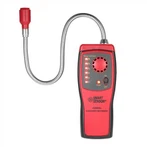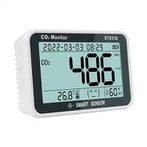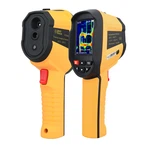Instructions on How to Adjust the Emissivity of an Infrared Thermometer
Infrared (IR) radiation
Infrared radiation is ubiquitous and endless, and the greater the temperature difference between objects, the more pronounced the radiation phenomenon becomes. Vacuum can transmit the infrared radiation energy emitted by the sun through 93 million miles of time and space to Earth, where it is absorbed by us and brings us warmth. When we stand in front of the food refrigerator in the mall, the infrared radiation heat emitted by our body is absorbed by the refrigerated food, making us feel very cool. The radiation effect is very obvious in both examples, and we can clearly feel the changes and feel its existence.
When we need to quantify the effect of infrared radiation, we need to measure the temperature of infrared radiation, which requires the use of an infrared thermometer. Different materials exhibit different infrared radiation characteristics. Before using an infrared thermometer to read temperature, we first need to understand the basic principles of infrared radiation measurement and the specific infrared radiation characteristics of the measured material.
Infrared emissivity=absorption rate+reflectance+transmittance
Regardless of the type of infrared radiation, once emitted, it will be absorbed, therefore absorption rate=emissivity. The infrared thermometer reads the infrared radiation energy emitted from the surface of the object. The infrared radiometer cannot read the infrared radiation energy lost in the air. Therefore, in practical measurement work, we can ignore the transmittance. In this way, we obtain a basic formula for infrared radiation measurement:
Infrared emissivity=emissivity - reflectance
Reflectance is inversely proportional to emissivity, and the stronger an object's ability to reflect infrared radiation, the weaker its own ability to emit infrared radiation. Usually, visual inspection is used to roughly determine the reflectivity of an object. New copper has a higher reflectivity but lower emissivity (0.07-0.2), oxidized copper has a lower reflectivity but higher emissivity (0.6-0.7), and copper that turns black due to heavy oxidation has even lower reflectivity but higher emissivity (0.88). The emissivity of the vast majority of painted surfaces is very high (0.9-0.95), while the reflectivity can be ignored.
For the vast majority of infrared thermometers, the required setting is the rated emissivity of the tested material, which is usually pre-set to 0.95. This is sufficient for measuring organic materials or painted surfaces.
By adjusting the emissivity of the thermometer, the problem of insufficient infrared radiation energy on the surface of some materials, especially metal materials, can be compensated for. Only when there is a high-temperature infrared radiation source near the surface of the object being measured and it reflects, does the influence of reflectivity on the measurement need to be considered.






